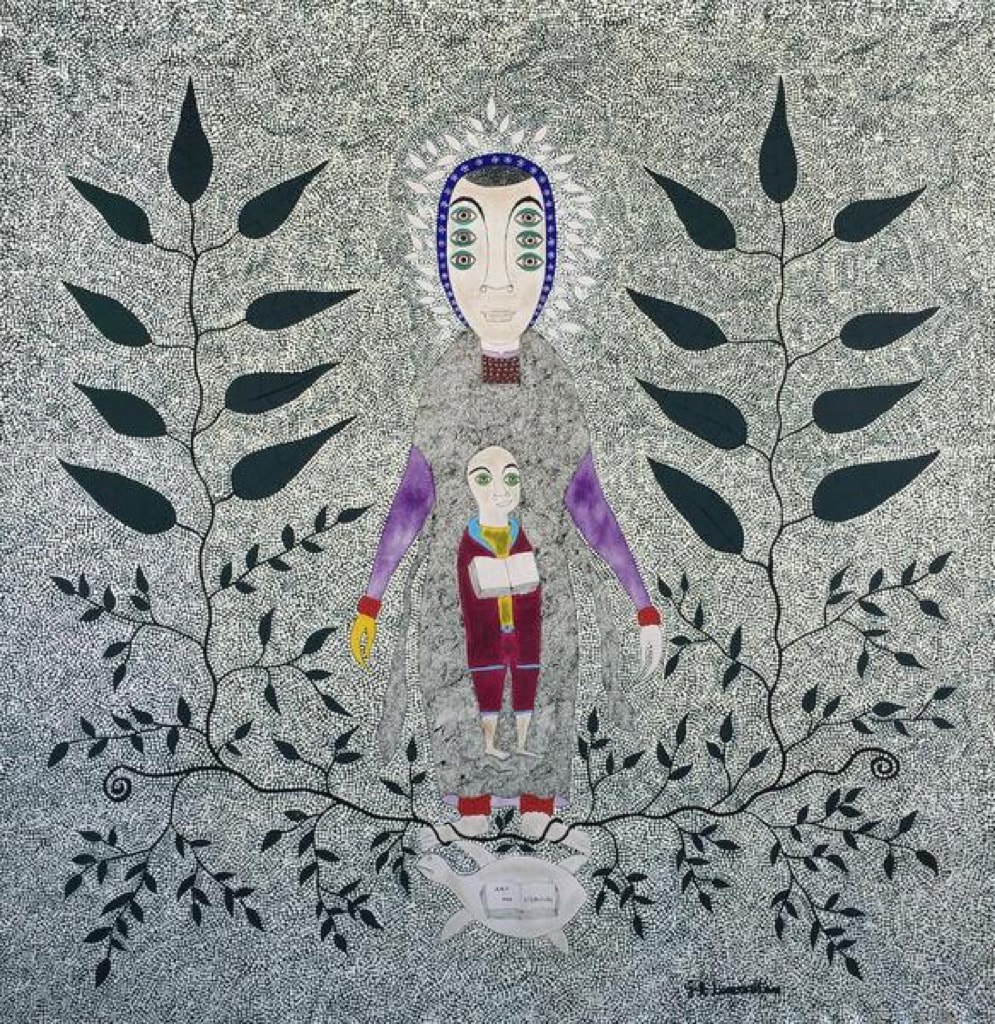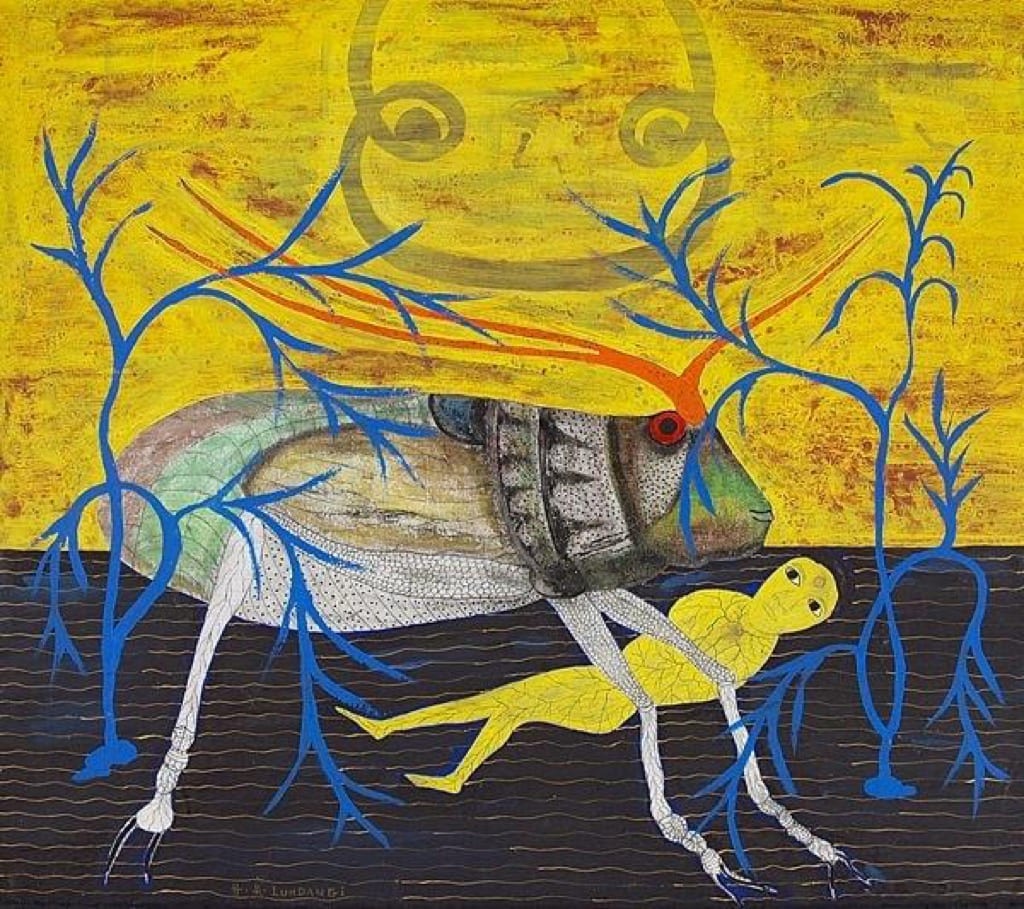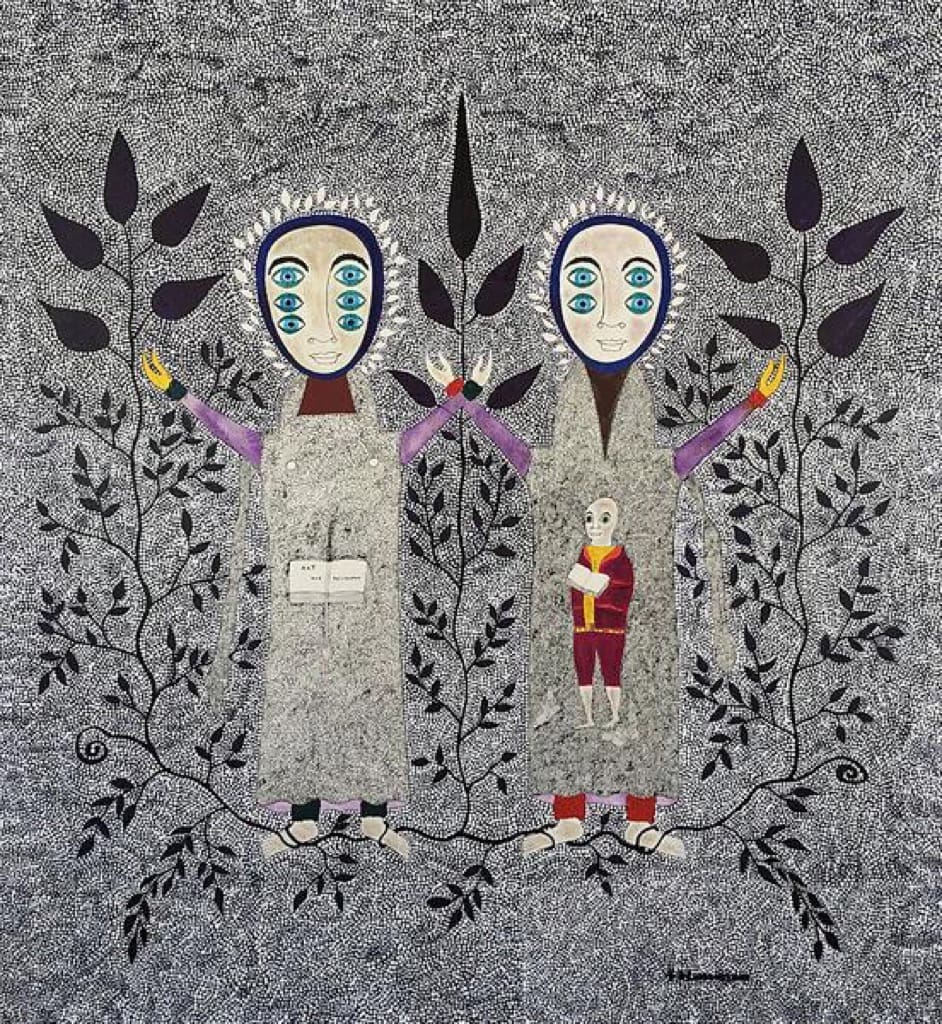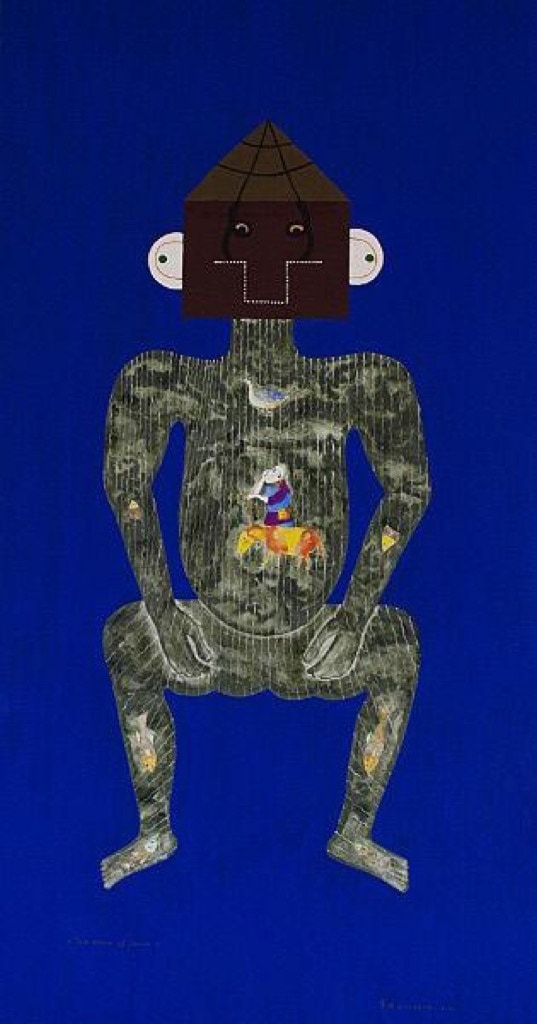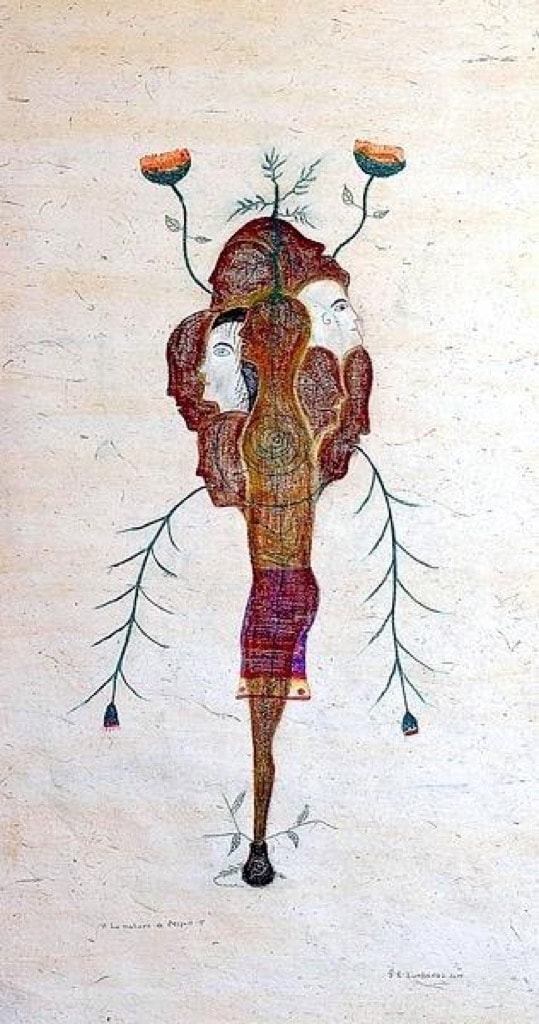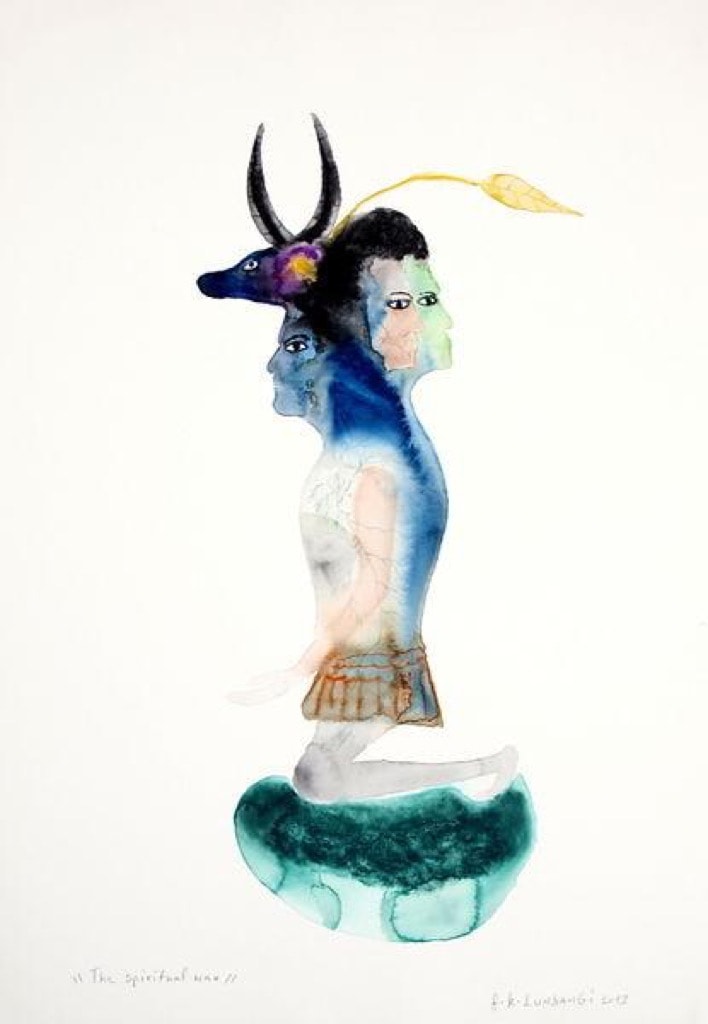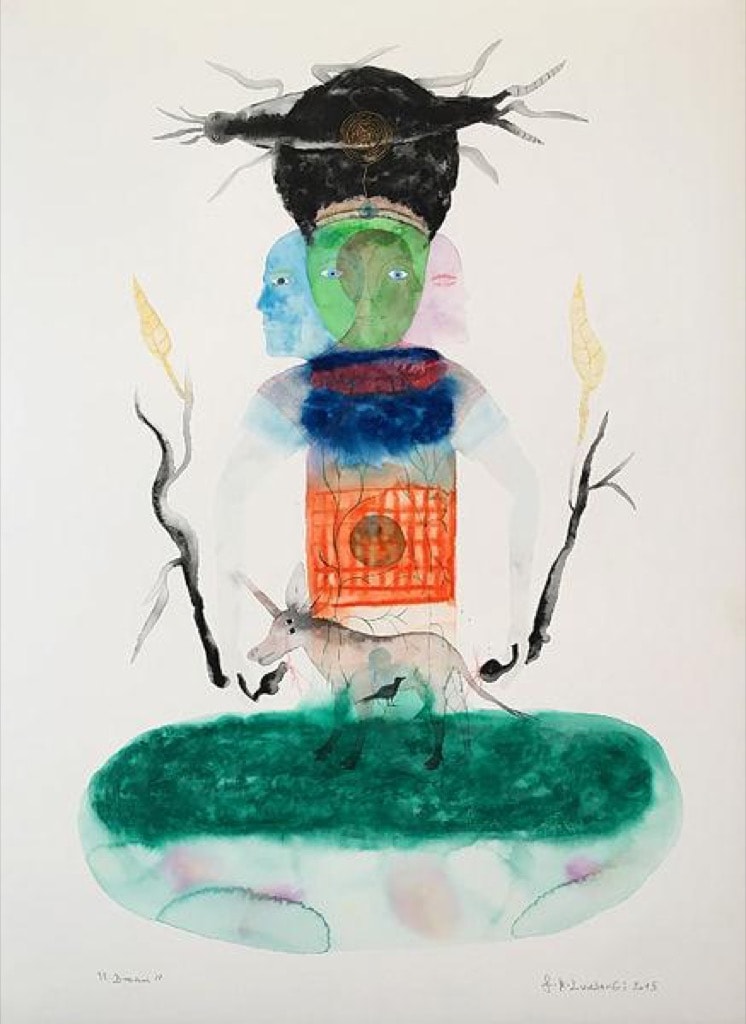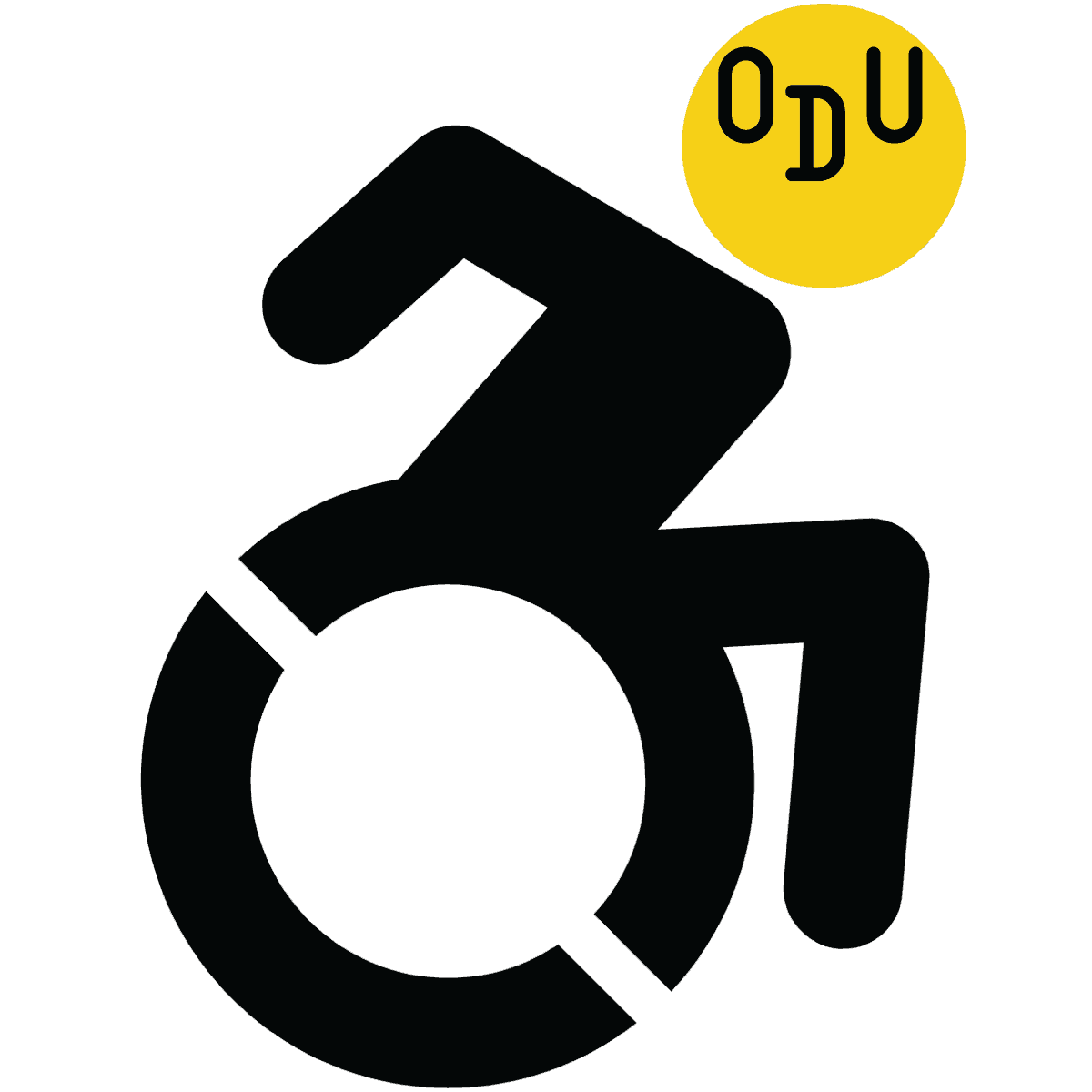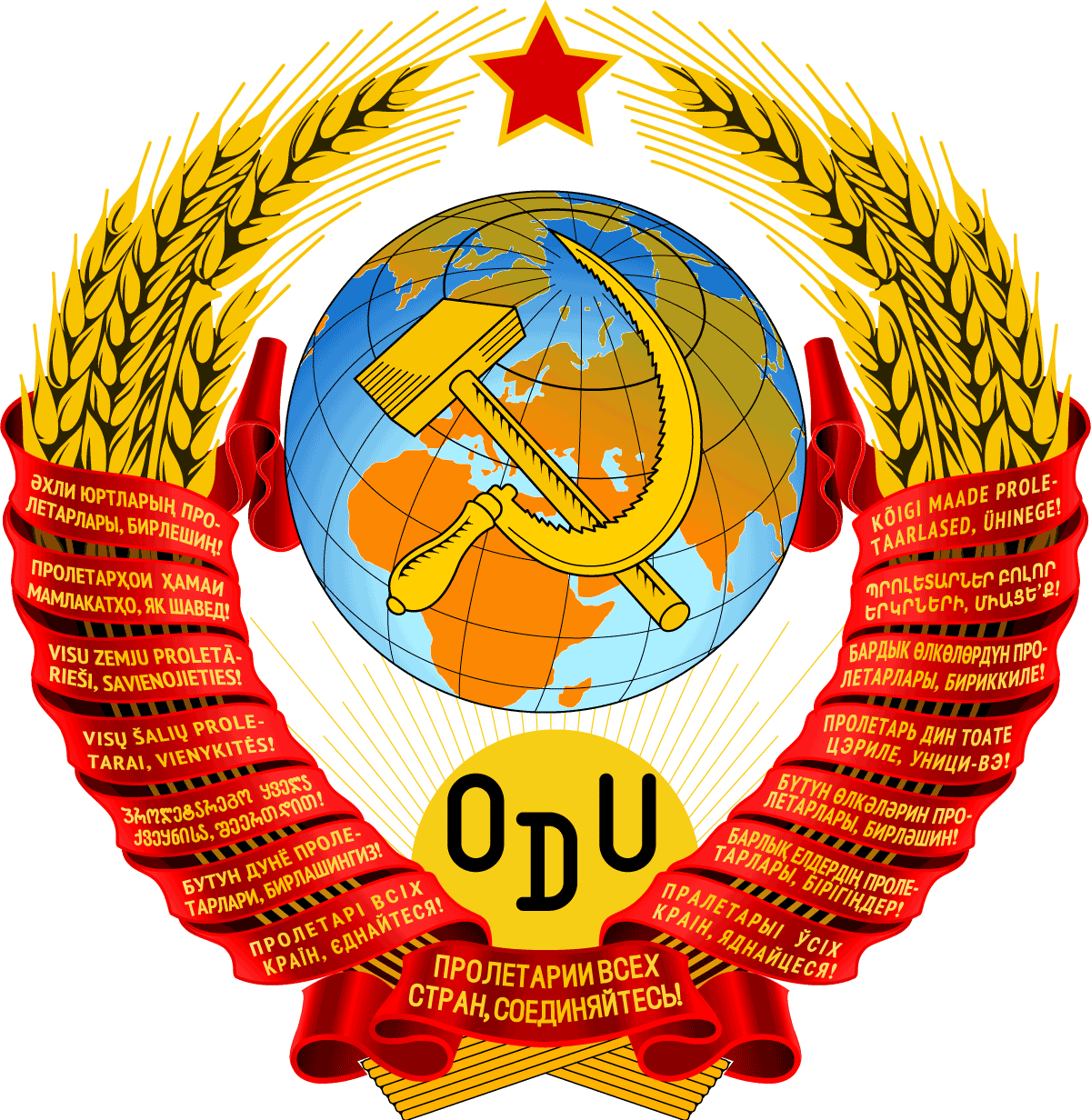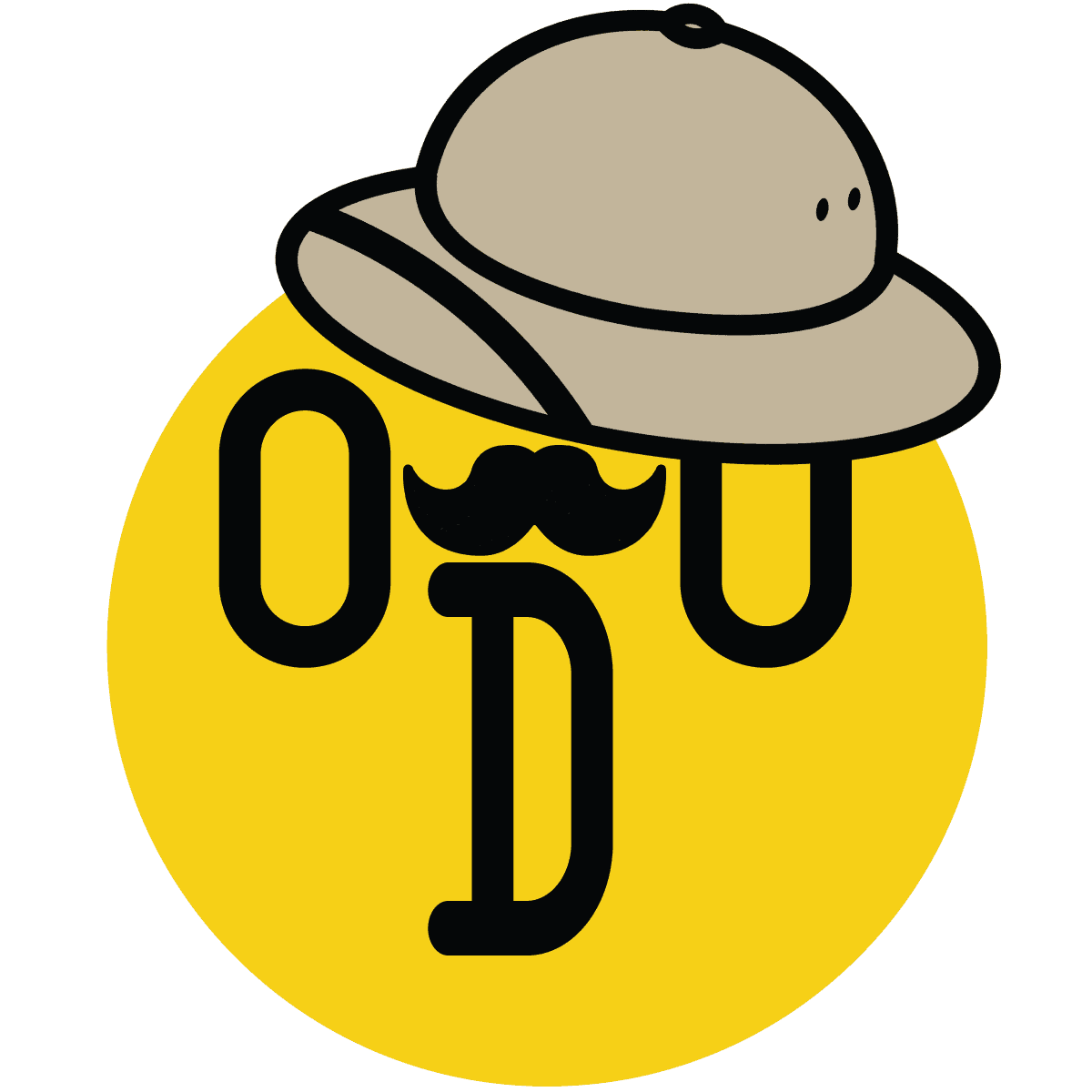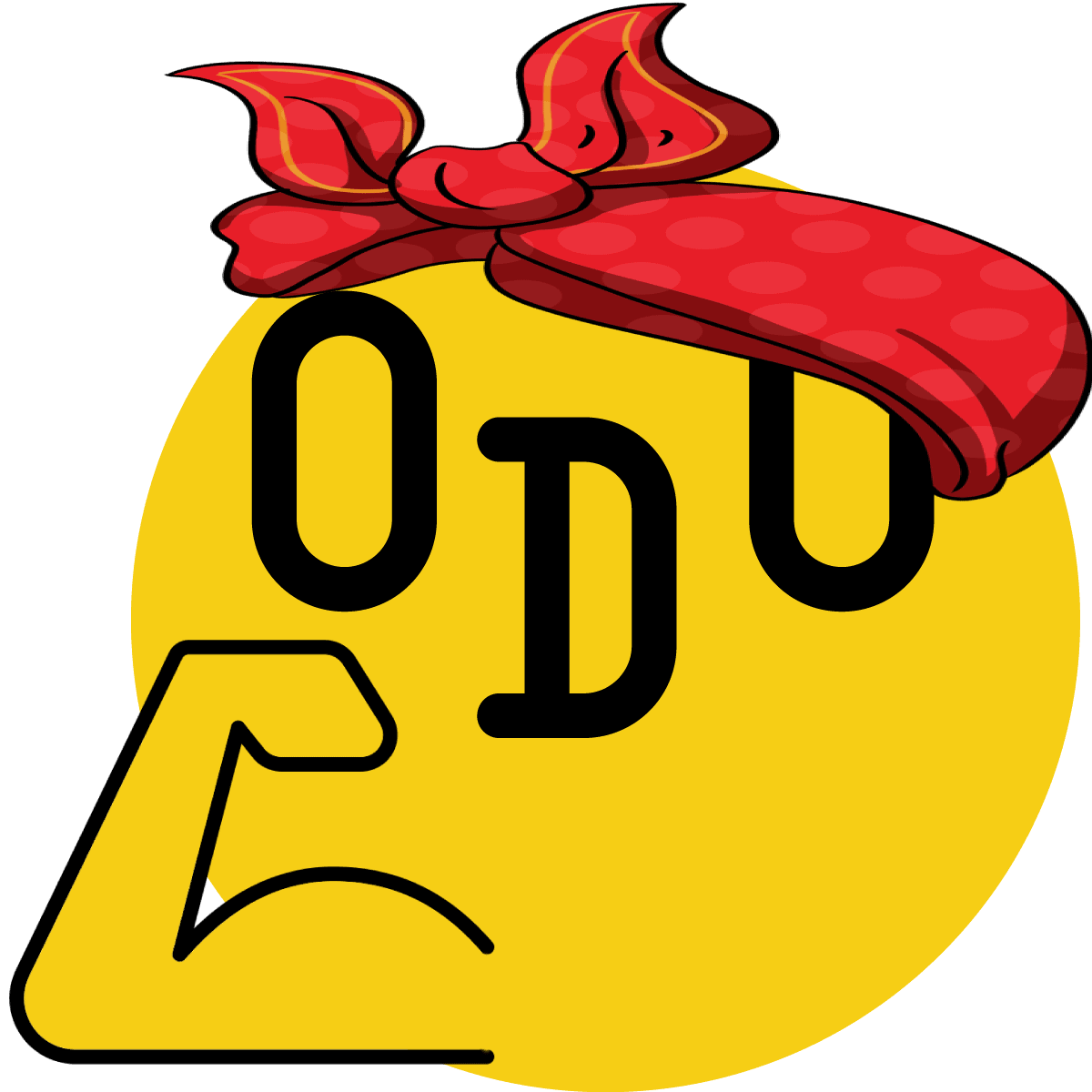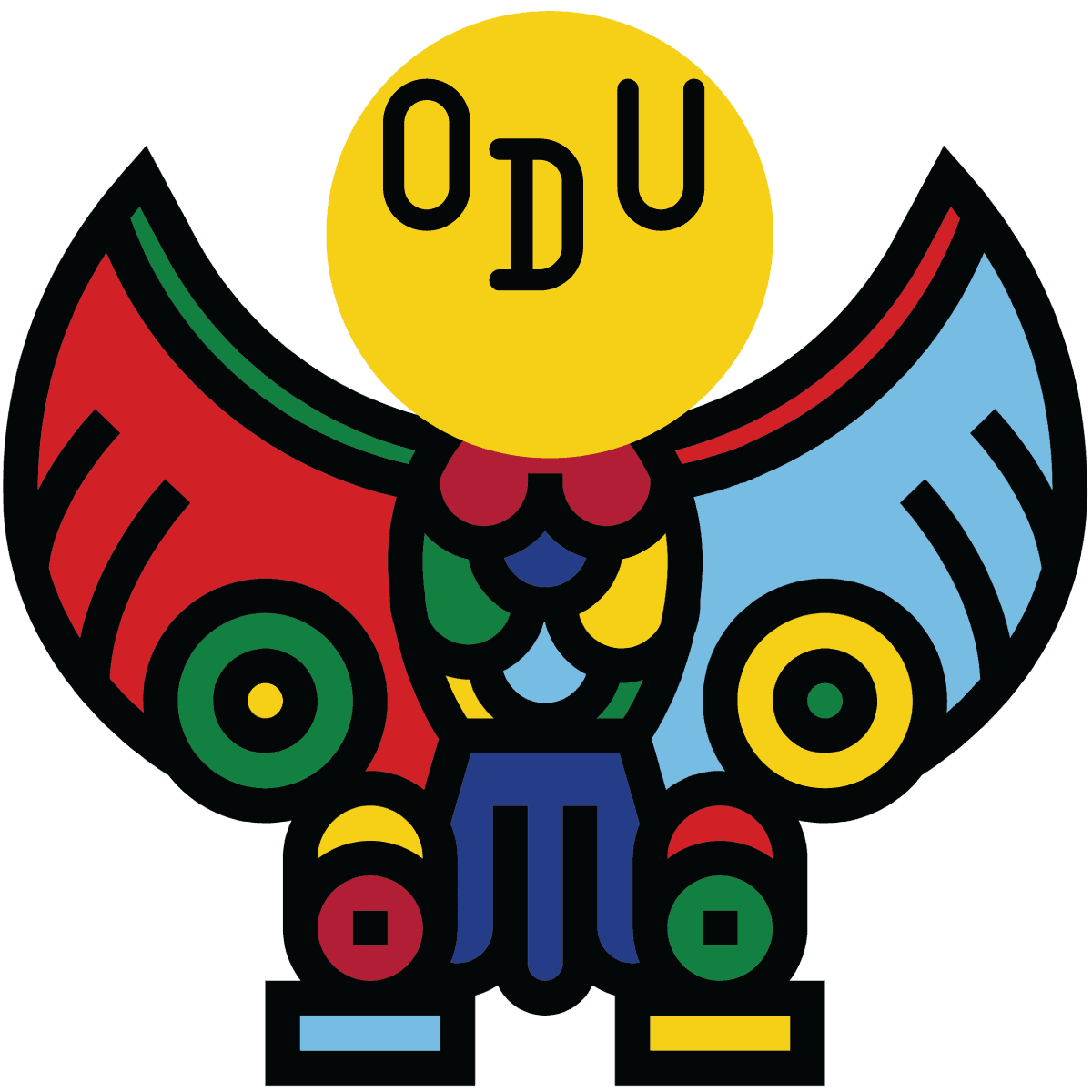Fantastic beasts, third eyes and unity with the cosmos in the works of a mystic painter who used to be a soccer player: the kind of spiritual imagery we need in the anthropocene


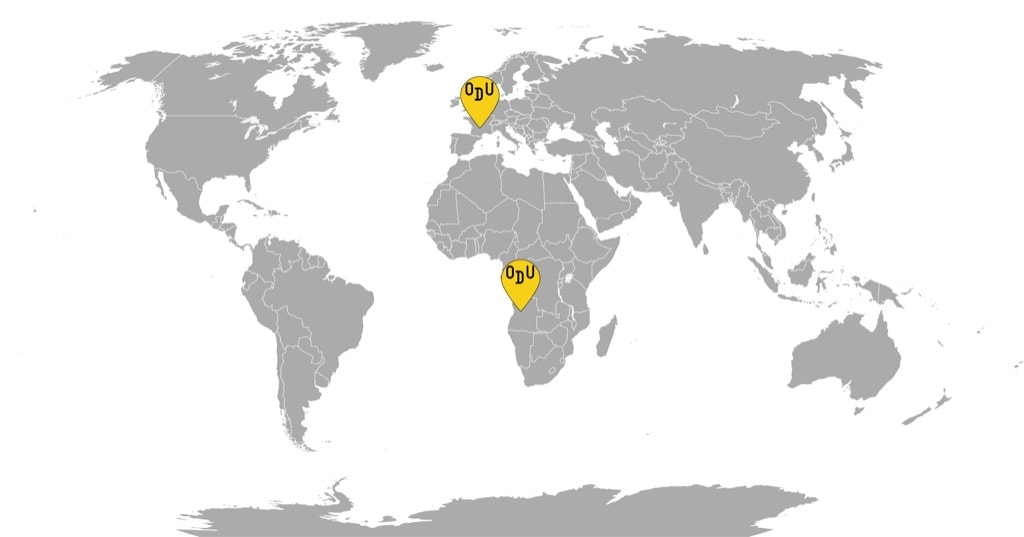
When looking at Franck Lundangi’s artwork, initially you might not be able to place it geographically. I know I couldn’t. The thin lines and precise iconography reminded me of Mughal or Sikh imagery. Some aspects mixing magic and spirituality were straight from the Christian playbook, especially when framed with the mosaic-like pointillism. The floating silhouettes and fantastic beasts could have easily been from Native American folk art. However, some elements were unmistakably African, from the more realist scenes of village life to creatures who seem to have jumped off a page in a Bantu folk tales book.
Franck Lundangi was born in Angola and currently lives and works in France. He had also lived in DR Congo and Gabon, so it’s no surprise that his work transcends borders. However, it’s the very particular imagination of this ex-soccer player that makes his paintings so utterly original and full of hybrid meaning. Lundangi has a precise understanding of the cosmos that inhabits his artwork, and he serves as its mystic in our realm. He had said of the time when he transitioned from being a soccer player to art that he merely drew as a child would, receiving the imagery from the universe. And it’s perhaps the fact that Lundangi did not receive formal training—like many other great contemporary artists, in fact—that he remains able to connect to this channel, a “third eye” of sorts. Is this why so many of his characters do have a “third eye”? (And a fourth, and a fifth.)
As Lundangi’s understanding of his practice evolved, he began to explain that the critical motifs to his creativity are Spirituality, Man, and Nature. And it’s gratifying to see how he manages to blend the three, without following the narrow paths of some other artists who claim “spirituality” as their inspiration. In Lundangi’s work, the human is submissive to the forces that be, and to nature. Humans are often depicted to be entrapped, devoured, absorbed, or buried by wildlife or its mystical counterparts. This humbling of humanity against the all-encompassing influence of nature and the unknown is like a refreshing, non-fanatical update on Bosch and other poets and painters of holy devastation.
And if we’re going to seek salvation through Lundangi’s work, it’s all there and crystal clear. Redemption is in the humans becoming one with the wilderness. Zoomorphic forms, a reversal of the usual pattern of assigning characteristics, is the harmony towards which we should strive. After centuries of cheerleading for the so-called civilization, we’re finally near an understanding of the true meaning of this planet. And it’s artists like Lundangi, who keep their eyes and their fontanel open to be able to communicate with the universe, who will be the new prophets.
For more content like this sign up for our weekly newsletter


